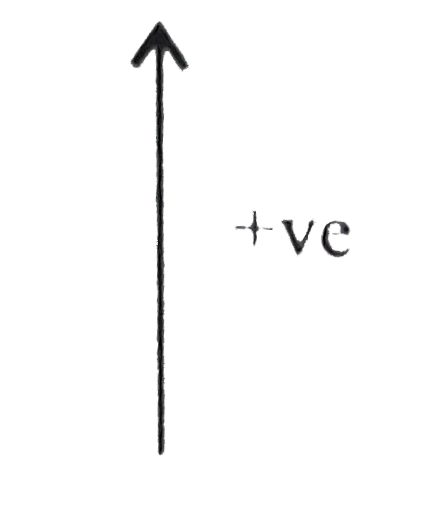A man is standing on top of a building 100 m high. He throws two balls vertically, one at t = 0 and other after a time interval (less than 2s). The later ball is thrown at a velocity of half the first. The vertical gap between first and second ball is 15 m at t = 2. The gap is found to remain constant. The velocities with which the balls were thrown are (Take g = 10ms−1)
20ms−1,10ms−1
10ms−1,5ms−1
16ms−1,8ms−1
30ms−1,15ms−1
The correct Answer is:A
For first stone,
taking the vertical upwards motion of the first stone up to highest point
Here, u = u1, v = 0 (At highest point velocity is zero)
a = -g, S = h1
As v2−u2=2aS ∴(0)2−u21=2(−g)h1 or h1=u212g ...(i)
For second stone,
Taking the vertical upwards motion of the second stone up to highest point
here, u = U2,v=0,a=−g,S=h2
As v2−u2 = 2as
∴(0)2−(u2)2=2(−g)h2 or h2=u212g.............(ii)
As per question
H1−h2=15m,u2=u12
Subtract (ii) from (i), we get, h1−h2=u212g−(u222g)
On substituting the given information, we get
15=u212g−u212g=3u218g or u21=15×8g3=15×8×103=400
or u1=20ms−1 and u2=U12=10ms−1

Topper's Solved these Questions
- MOTION IN A STRAIGHT LINEBOOK - NCERT FINGERTIPSCHAPTER - MOTION IN A STRAIGHT LINEEXERCISE - Relative Velocity
18 Videos
- MOTION IN A STRAIGHT LINEBOOK - NCERT FINGERTIPSCHAPTER - MOTION IN A STRAIGHT LINEEXERCISE - Higher Order Thinking Skills
10 Videos
- MOTION IN A STRAIGHT LINEBOOK - NCERT FINGERTIPSCHAPTER - MOTION IN A STRAIGHT LINEEXERCISE - Acceleration
19 Videos
- MOTION IN A PLANE BOOK - NCERT FINGERTIPSCHAPTER - MOTION IN A PLANE EXERCISE - Assertion And Reason
15 Videos
- OSCILLATIONS BOOK - NCERT FINGERTIPSCHAPTER - OSCILLATIONS EXERCISE - Assertion And Reason
15 Videos
Similar Questions
A man is standing on top of a building 100 m high. He throws two ball vertically, one at t=0 and after a time interval (less than 2 seconds). The later ball is thrown at a velocity of half the first. At t=2, both the balls reach to their and second ball is +15m.
Q. The speed of first ball is
View SolutionA man is standing on top of a building 100 m high. He throws two ball vertically, one at t=0 and after a time interval (less than 2 seconds). The later ball is thrown at a velocity of half the first. At t=2, both the balls reach to their maximum heights at this time the vertical gap between first and second ball is +15m.
Q. The speed of first ball is
View Solution
Knowledge Check
A man is standing on top of a building 100 m high. He throws two ball vertically, one at t=0 and after a time interval (less than 2 seconds). The later ball is thrown at a velocity of half the first. At t=2, both the balls reach to their and second ball is +15m.
Q. The speed of first ball isA20 m/sB10 m/sC5 m/sD15 m/sA man is standing on top of a building 100 m high. He throws two ball vertically, one at t=0 and after a time interval (less than 2 seconds). The later ball is thrown at a velocity of half the first. At t=2, both the balls reach to their and second ball is +15m.
Q. The time interval between the throw of ball isA1.2 secB0.5 secC0.8 secD1 secA ball is thrown vertically upwards. It was observed at a height h twice after a time interval Δt. The initial velocity of the ball is
A√8gh+(gΔt)2B√2gh+(gΔt2)2C√8gh+(2gΔt)2D√2gh
A ball is thrown vertically upwards. It was observed at a height h twice after a time interval Δt. The initial velocity of the ball is
View SolutionA boy throws n balls per second at regular time intervals. When the first ball reaches the maximum height he throws the second one vertically up. The maximum height reached by each ball is
View SolutionA boy throws balls into air at regular interval of 2 second. The next ball is thrown when the velocity of first ball is zero. How high do the ball rise above his hand? [Take g=9.8m/s2]
View SolutionA boy throws balls into air at regular interval of 2 second. The next ball is thrown when the velocity of first ball is zero. How high do the ball rise above his hand? [Take g=9.8m/s2]
View SolutionA boy throws n balls per second at regular time intervals. When the first ball reaches the maximum height he throws the second one vertically up. The maximum height reached by each bass is
View Solution
